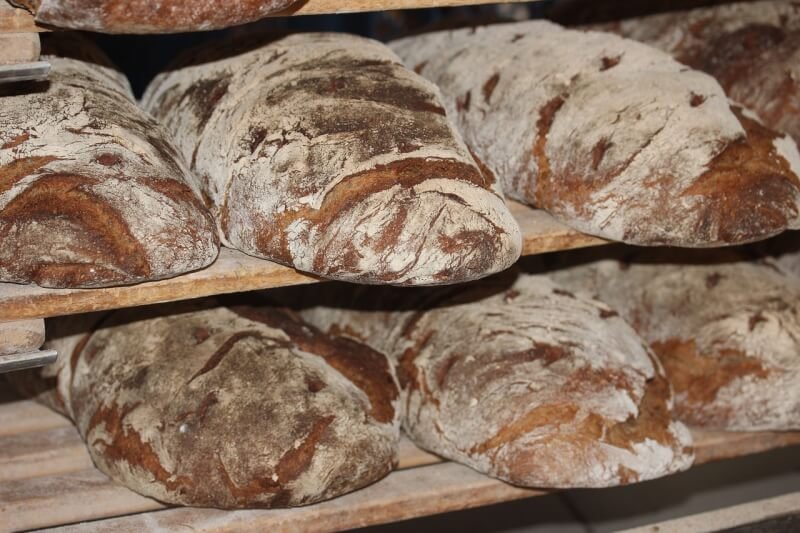Imagine the warm, comforting aroma of freshly baked banana bread wafting through your kitchen, inviting you to take a moment to indulge in its deliciousness. If you’ve ever wondered how to achieve that perfect combination of moistness, sweetness, and just the right amount of banana flavor, look no further. In this article, you’ll discover the simple yet essential steps to baking a comforting loaf of homemade banana bread that will leave you feeling satisfied and your taste buds begging for more. So, grab your apron and ripe bananas, and let’s embark on a baking adventure together!
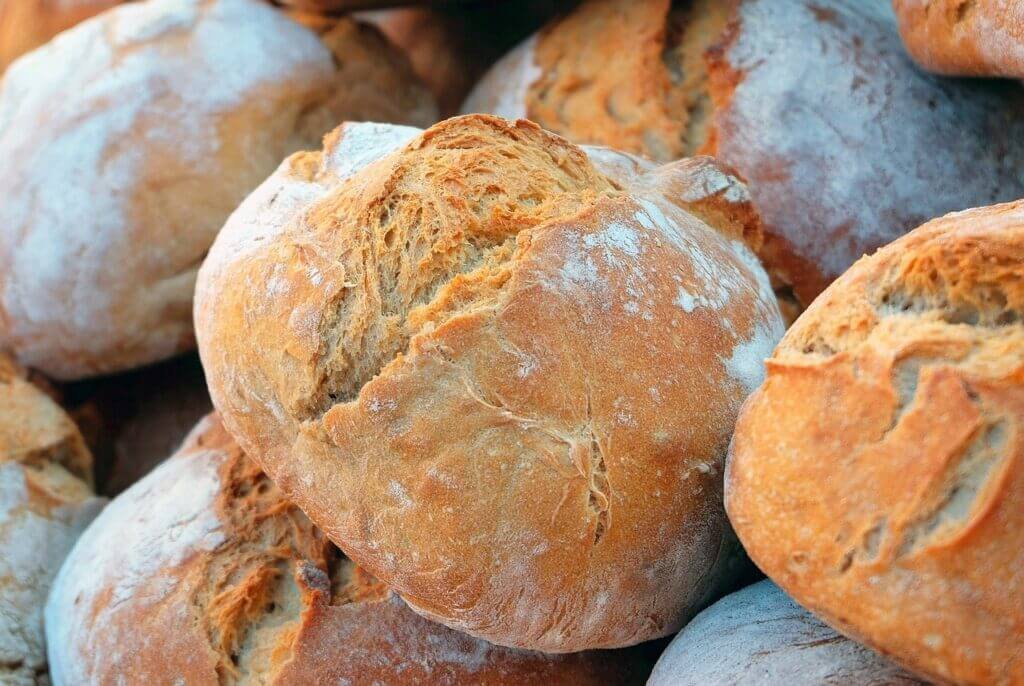
Choosing the Right Ingredients
When it comes to baking a comforting loaf of homemade banana bread, choosing the right ingredients is crucial. Here are some tips to ensure that you have the best banana bread experience.
Selecting Ripe Bananas
The key to achieving a delicious and flavorful banana bread lies in using ripe bananas. Look for bananas that are yellow with brown spots or even fully brown. These ripe bananas will not only be easier to mash but will also add a sweet and intense flavor to your bread.
Using the Right Flour
Choosing the right flour for your banana bread is important to achieve the perfect texture. While all-purpose flour works well, you can experiment with other types of flours like whole wheat flour or even gluten-free alternatives. Whole wheat flour adds a nutty flavor and boosts the nutritional value, while gluten-free flours cater to dietary restrictions without compromising on taste.
Choosing the Sweetener
The sweetness of your banana bread depends on the type of sweetener you choose. Traditional options like granulated sugar or brown sugar work well, but you can also opt for healthier alternatives such as honey, maple syrup, or coconut sugar. These natural sweeteners add a unique flavor profile to your bread and can be adjusted according to your taste preferences.
Deciding on the Fats and Dairy
Deciding on the fats and dairy products in your banana bread can make a significant difference in its texture and taste. Most recipes call for unsalted butter, but you can also use alternatives like vegetable oil or even coconut oil for a unique twist. If you’re looking for a dairy-free option, consider using plant-based milk or yogurt instead of regular milk or buttermilk.
Adding Flavor Enhancers
While the star of banana bread is undoubtedly the bananas themselves, adding flavor enhancers can take your loaf to the next level. Consider incorporating ingredients like vanilla extract, cinnamon, or nutmeg to add warmth and depth to the flavor profile. You can also experiment with grated orange zest, chocolate chips, or toasted nuts for added texture and indulgence.
Preparing the Batter
Once you have gathered all your ingredients, it’s time to prepare the batter for your banana bread. Follow these steps to ensure a smooth and well-incorporated mixture.
Mashing the Bananas
Start by mashing your ripe bananas until they become smooth and creamy. You can use a fork or a potato masher for this step. Mashing the bananas thoroughly will help distribute their flavor evenly throughout the bread and prevent any lumps in the final result.
Mixing the Wet Ingredients
In a separate bowl, combine the wet ingredients such as melted butter, beaten eggs, and any liquid sweeteners you’ve chosen. Whisk them together until well combined. This step ensures that all the wet ingredients are evenly mixed, allowing for a consistent texture and flavor in your banana bread.
Combining the Dry Ingredients
In another bowl, whisk together the dry ingredients, including the flour, baking powder, baking soda, salt, and any spices you’re using. Whisking the dry ingredients helps to aerate and evenly distribute them, ensuring a uniform texture in your finished banana bread.
Incorporating the Wet and Dry Ingredients
Now it’s time to bring everything together. Create a well in the center of the dry ingredients and pour in the wet ingredients. Use a spatula or wooden spoon to gently fold the ingredients together, taking care not to overmix. Overmixing can lead to a dense and tough banana bread. Stop mixing as soon as the dry ingredients are fully incorporated into the wet ingredients.

Adding Extra Ingredients
While classic banana bread is delicious on its own, adding extra ingredients can take it to a whole new level of flavor and texture. Here are some options to consider:
Enhancing with Nuts and Seeds
Adding nuts or seeds can provide a delightful crunch and depth of flavor to your banana bread. Walnuts and pecans are popular choices, but you can also experiment with almonds, macadamia nuts, or even pumpkin or sunflower seeds. Toasting your nuts or seeds before incorporating them into the batter can intensify their flavors.
Experimenting with Chocolates and Spices
For the chocolate lovers out there, adding chocolate chips or chunks to your banana bread can create a decadent treat. Consider using dark chocolate for a richer flavor or white chocolate for a sweeter touch. Additionally, spices like cinnamon, nutmeg, or even cardamom can complement the sweetness of the bananas, adding a comforting warmth to your bread.
Including Fruit and Berries
If you want to add a fruity twist, consider incorporating additional fruits or berries into your banana bread. Blueberries, raspberries, or diced apples can provide bursts of flavor and moisture in every bite. Just make sure to adjust the baking time slightly to account for the added moisture from the fruits.
Baking Techniques and Tips
To ensure that your banana bread bakes perfectly every time, it’s important to pay attention to some essential baking techniques and tips. Here’s what you need to know:
Preheating the Oven
Before you start baking, preheat your oven to the specified temperature in the recipe. Preheating ensures that your banana bread begins to cook immediately once it goes into the oven, resulting in a more even rise and consistent texture.
Choosing the Right Pan
Selecting the right pan is crucial for even baking and preventing the bread from sticking. Traditional loaf pans work well, but you can also use bundt pans, round cake pans, or even muffin tins for individual servings. Just make sure to adjust the baking time accordingly if using different pan sizes.
Greasing and Flouring the Pan
To prevent your banana bread from sticking to the pan, it’s important to grease the pan generously. You can use butter, cooking spray, or even line the pan with parchment paper. Additionally, dusting the greased surface with flour ensures easy release and a beautifully golden crust.
Determining the Baking Time
The baking time for banana bread can vary depending on your oven and the size of your loaf. It’s essential to follow the suggested baking time in the recipe but start checking for doneness a few minutes before the specified time. Insert a toothpick or a cake tester into the center of the bread, and if it comes out clean or with a few moist crumbs clinging to it, your bread is ready.
Checking for Doneness
Apart from using a toothpick, other visual cues can indicate whether your banana bread is fully baked. The top should be golden brown, and the sides should begin to pull away slightly from the pan. You can also gently press the top of the bread – if it springs back and doesn’t sink, it’s a good sign that it’s done.
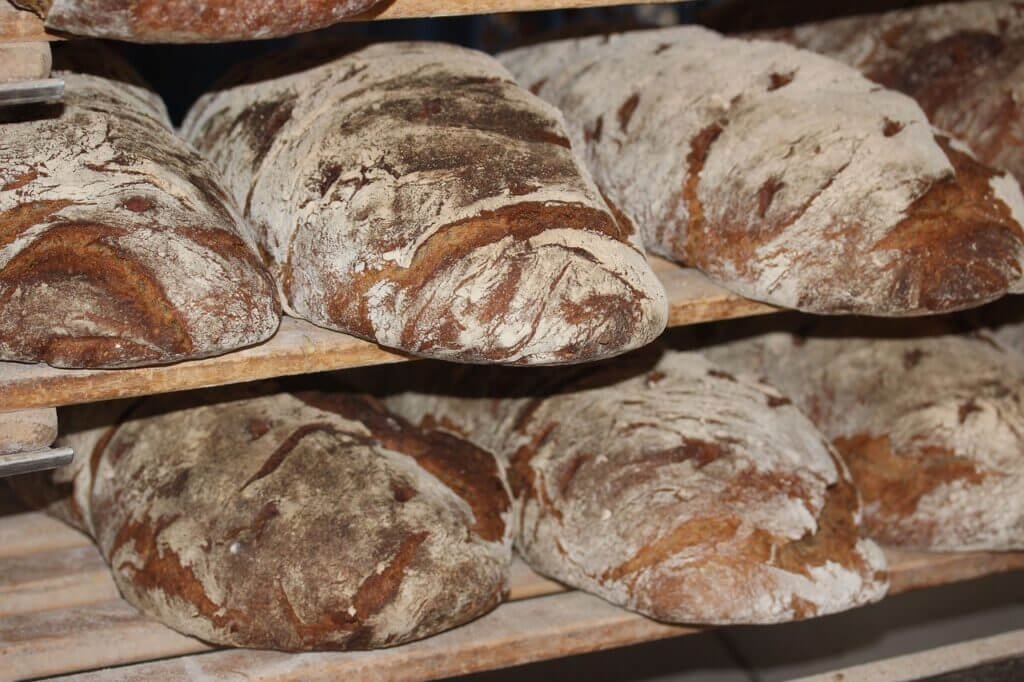
Storing and Freezing Banana Bread
Once your banana bread has cooled, you may be wondering how to store it properly to maintain freshness and extend its shelf life. Here are some storage options to consider:
Cooling the Bread
Before storing your banana bread, allow it to cool completely. This ensures that any residual heat dissipates, preventing condensation from forming inside the storage container and potentially making the bread soggy.
Storing at Room Temperature
If you plan on consuming your banana bread within a couple of days, storing it at room temperature is your best option. Wrap the cooled bread tightly in plastic wrap or place it in an airtight container to protect it from drying out. Beware of storing it near fruits or vegetables that emit ethylene gas, as this can cause the bread to ripen and spoil faster.
Refrigerating for Longer Shelf Life
If you want to prolong the shelf life of your banana bread, refrigeration is an effective method. Place the wrapped or containerized bread in the refrigerator, where it can stay fresh for up to a week. Remember to let it come to room temperature or warm it slightly before serving for the best texture and flavor.
Freezing for Future Consumption
To enjoy your banana bread for an extended period, freezing is the way to go. Wrap individual slices or the entire loaf tightly in plastic wrap followed by aluminum foil or place them in a freezer-safe ziplock bag. Frozen banana bread can maintain its quality for up to three months. Thaw it in the refrigerator overnight or reheat it in the oven for a warm and comforting treat.
Gluten-Free and Vegan Alternatives
For those with dietary restrictions or preferences, there are plenty of alternatives available to make banana bread gluten-free or vegan-friendly. Here’s how you can modify the recipe:
Substituting Wheat Flour with Gluten-Free Options
If you’re looking to make gluten-free banana bread, you can replace the wheat flour with a gluten-free flour blend. There are a variety of options available, such as almond flour, coconut flour, or a pre-made gluten-free flour mix. Keep in mind that the texture and flavor may differ slightly from traditional banana bread.
Using Egg Replacements
To make your banana bread vegan or if you have an egg allergy, you can substitute eggs with suitable alternatives. Common egg replacements include flaxseed meal, applesauce, mashed bananas, or commercial egg replacers. These alternatives help bind the ingredients together and provide moisture to the bread.
Opting for Dairy-Free Alternatives
If you’re avoiding dairy, there are several substitutes you can use in place of butter and milk. Coconut oil or vegetable oil can be used instead of butter, while almond milk, soy milk, or oat milk can be used in place of regular milk. These dairy-free alternatives will still allow you to enjoy a delicious and flavorful banana bread.
Making the Bread Vegan-Friendly
To make your banana bread completely vegan, combine the above substitutions. Replace wheat flour with a gluten-free option, use an egg replacement, and opt for dairy-free alternatives. With these adjustments, you can enjoy a moist and delectable vegan banana bread that aligns with your dietary preferences.
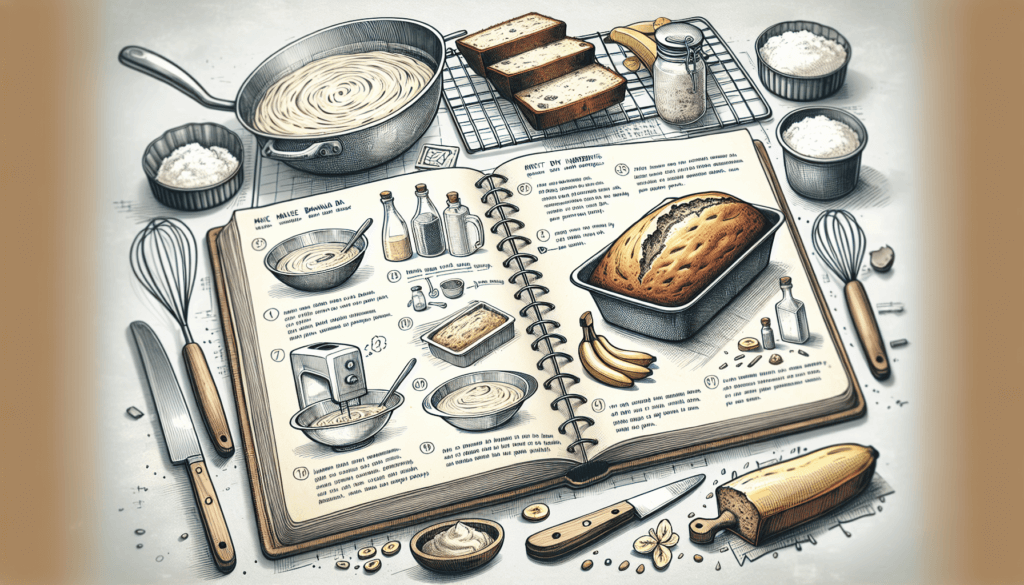
Troubleshooting Common Issues
Even with the best preparations, things don’t always go perfectly in the baking world. If you encounter any issues with your banana bread, here are some troubleshooting tips:
Avoiding a Dense Texture
If your banana bread turns out dense, it may be due to overmixing the batter or using too much flour. To avoid this, mix the wet and dry ingredients just until they are incorporated, and make sure to measure your flour accurately. Adding an extra ripe banana or a couple of tablespoons of yogurt can also help moisten the bread and lighten its texture.
Preventing Soggy Centers
Soggy centers can result from underbaking the bread or adding too many moist ingredients like fruits or vegetables. To prevent this, ensure that your banana bread is baked for the recommended time and that any added fruits or berries are well-drained. Checking for doneness using a toothpick in the center of the bread is essential to ensure it is fully cooked.
Addressing Overbrowning
If your banana bread is browning too quickly on the top while the center is still undercooked, try lowering the oven temperature slightly and covering the loaf with aluminum foil during the last portion of the baking time. This will help slow down browning while allowing the center to cook through.
Fixing Dry or Crumbly Bread
Dry or crumbly banana bread may be the result of too little moisture or overbaking. To combat dryness, you can add an extra mashed banana or a tablespoon of oil or yogurt to the batter. Additionally, reducing the baking time by a few minutes can maintain a moist and tender crumb.
Dealing with Sunken Tops
Sunken tops can be a result of too much leavening agent or opening the oven door too early in the baking process. To prevent this, ensure that you measure the baking powder or baking soda accurately. Avoid opening the oven door during the first half of the baking time to allow for proper rising.
Creative Variations of Banana Bread
Once you have perfected your classic banana bread recipe, it’s time to get creative and try different variations. Here are some ideas to take your banana bread to new levels of deliciousness:
Incorporating Chocolate Chips or Chunks
If you’re a chocolate lover, why not add some chocolate goodness to your banana bread? Stir in a generous amount of chocolate chips or chunks into the batter before baking. As the bread bakes, the chocolate will melt slightly, creating pockets of gooey and indulgent chocolate throughout the loaf.
Adding a Cream Cheese Swirl
For a delicious and visually appealing twist, you can create a cream cheese swirl in your banana bread. Prepare a mixture of softened cream cheese, sugar, and vanilla extract. After pouring the banana bread batter into the pan, dollop spoonfuls of the cream cheese mixture on top. Use a skewer or toothpick to gently swirl the cream cheese into the batter, creating streaks of creamy goodness as it bakes.
Making Banana Nut Muffins
If you prefer individual servings or want a portable option, transform your banana bread recipe into banana nut muffins. Simply pour the batter into muffin cups lined with paper liners and sprinkle chopped nuts on top. Baking time will be slightly shorter than for a loaf of banana bread, so keep an eye on them to ensure they are baked to perfection.
Trying a Cinnamon Swirl
For a fragrant and flavorful twist, experiment with a cinnamon swirl in your banana bread. Prepare a mixture of cinnamon, sugar, and softened butter. After pouring half of the banana bread batter into the loaf pan, layer half of the cinnamon mixture on top. Repeat with the remaining batter and cinnamon mixture. Use a knife or skewer to gently swirl the layers together, creating a beautiful, marbled effect.
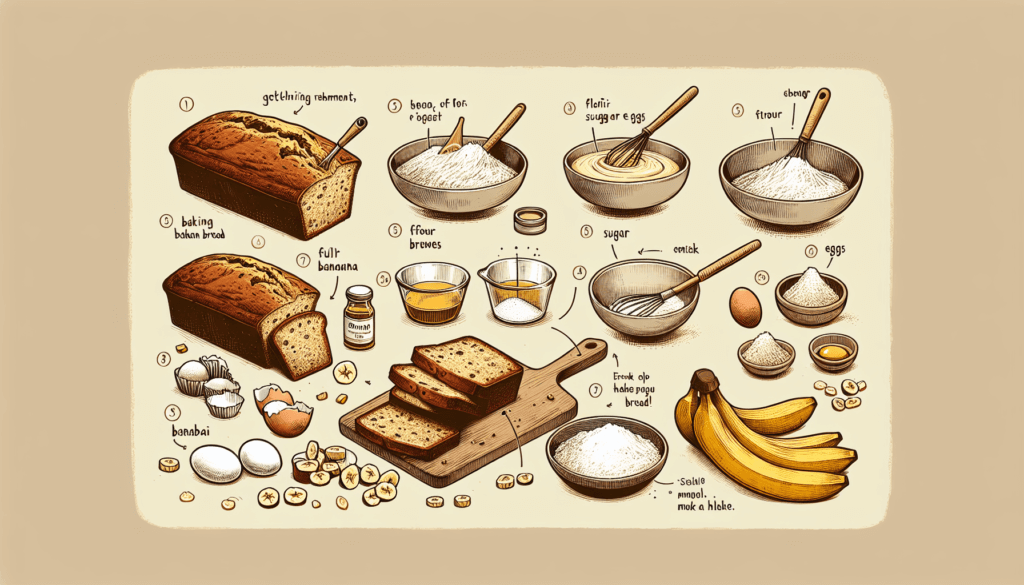
Accompaniments and Serving Suggestions
Now that your homemade banana bread is ready to be enjoyed, it’s time to consider how to best serve and enjoy it. Here are some accompaniments and serving suggestions to complement your delicious creation:
Spreading Butter or Nutella
For a classic and indulgent touch, spread a generous amount of butter on a warm slice of banana bread. The butter melts into the bread, adding a creamy richness to each bite. Alternatively, if you’re a fan of chocolate, try spreading Nutella for a heavenly combination of flavors.
Pairing with Coffee or Tea
Banana bread makes a perfect companion to a morning cup of coffee or afternoon tea. The comforting flavors of the bread complement the aromatic qualities of coffee or tea, creating a delightful pairing. Whether you prefer a hot cup of black coffee or a soothing herbal tea, indulge in a slice of banana bread for a cozy and satisfying treat.
Serving with Ice Cream or Whipped Cream
For a decadent and indulgent dessert, serve your banana bread with a scoop of your favorite ice cream. The contrast of the warm bread and cold ice cream creates a delightful combination of textures and temperatures. Alternatively, top your slice of banana bread with freshly whipped cream for a lighter, airy topping.
Enjoying with Fruit Jam or Honey
Another delightful way to enjoy your homemade banana bread is by spreading a dollop of fruit jam or drizzling honey over each slice. Fruit jams like strawberry, raspberry, or apricot add a burst of fruity sweetness, while honey adds a natural and delicate sweetness. These accompaniments enhance the flavors of the banana bread, elevating it to new levels of deliciousness.
Sharing Banana Bread with Others
Once you have perfected your homemade banana bread, why not share the comfort and joy with others? Here are some ideas on how to spread the love:
Gifting Homemade Banana Bread
If you’re looking for a thoughtful and delicious gift, homemade banana bread is the perfect choice. Bake a loaf or a batch of muffins, wrap them in a beautiful packaging, and present them to friends, family, or colleagues. The recipients will appreciate the effort and love put into the homemade treat.
Tips for Packaging and Presentation
When it comes to packaging and presentation, there are endless creative options. Consider using decorative tins, baskets, or clear food bags tied with colorful ribbons. You can also add a personalized note or recipe card to accompany the gift, making it even more special. Remember to keep the banana bread tightly wrapped or in an airtight container to maintain its freshness.
Sharing Recipes and Experiences
As you share your homemade banana bread with others, take the opportunity to exchange recipes and experiences. Encourage others to try their hand at baking banana bread and share their own personal touches. By creating a community of banana bread enthusiasts, you can inspire each other to continue exploring different flavors and techniques.
Baking a comforting loaf of homemade banana bread is a delightful experience that brings warmth and joy to your home. With the right ingredients, techniques, and a touch of creativity, you can create a perfectly moist and flavorful treat that will impress both your family and friends. So, gather your ripe bananas, roll up your sleeves, and get ready to enjoy the comforting embrace of homemade banana bread.

